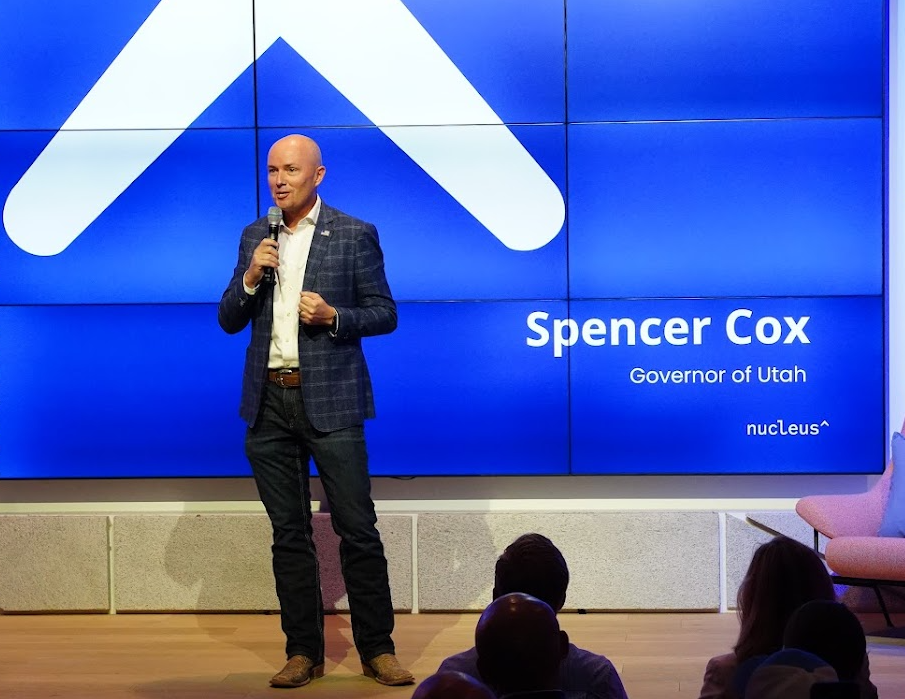

Salt Lake City, UT — August 27, 2025
In a state already recognized as the most innovative in the nation, Utah is taking its ambition to a new level with the launch of the Nucleus Institute, an initiative that realigns, combines, and rebrands several existing state entities in an effort to unite government, higher education, and industry under a single vision: turning ideas into real-world impact.
This shift, mandated by House Bills 542 and 530, passed in the 2025 legislative session, represents a strategic pivot for the state. By making these moves Utah aims to sharpen its innovation engine, aligning funding strategies, organizational structures, and deep-tech commercialization pathways.
A today's Nucleus Institute announcement, Governor Spencer Cox reflected on how Utah earned its top ranking in the Innovation Intelligence Index (II³), highlighting the five ingredients that drive innovation: human capital, employment, economic standards, business friendliness, and core competencies. “Innovation is not in our DNA,” said Gov. Cox. “It’s a skill we’ve intentionally passed down over generations—from survival-driven ingenuity to today’s deliberate investments in education, workforce, and business.”
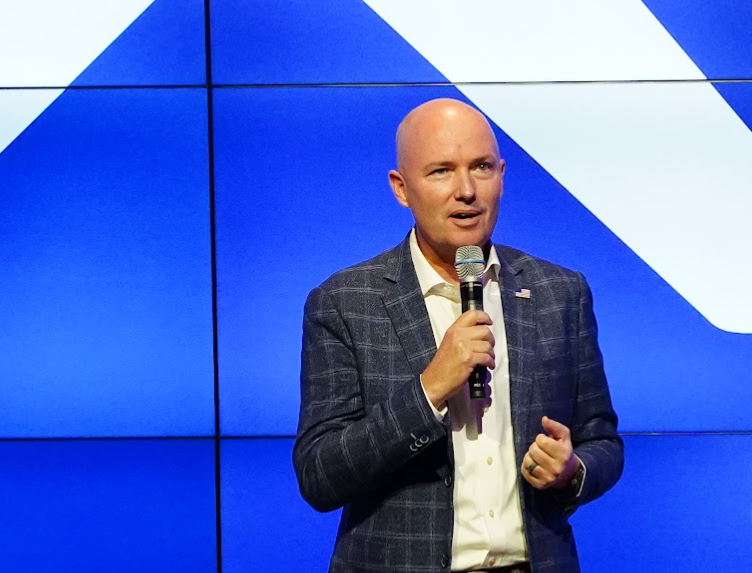
Gov. Cox emphasized the state’s proactive approach to emerging challenges, citing Operation Gigawatt, a program designed to double Utah’s energy production capacity to meet the demand from AI data centers. “We don’t predict the future,” he said. “We accurately describe the present and act on it.” The Governor underscored that leadership in innovation requires collaboration between government, higher education, and the private sector. “There has never been more capital available for innovation, especially in energy, AI, and deep tech. Utah must capture it to create jobs and solve societal challenges.”
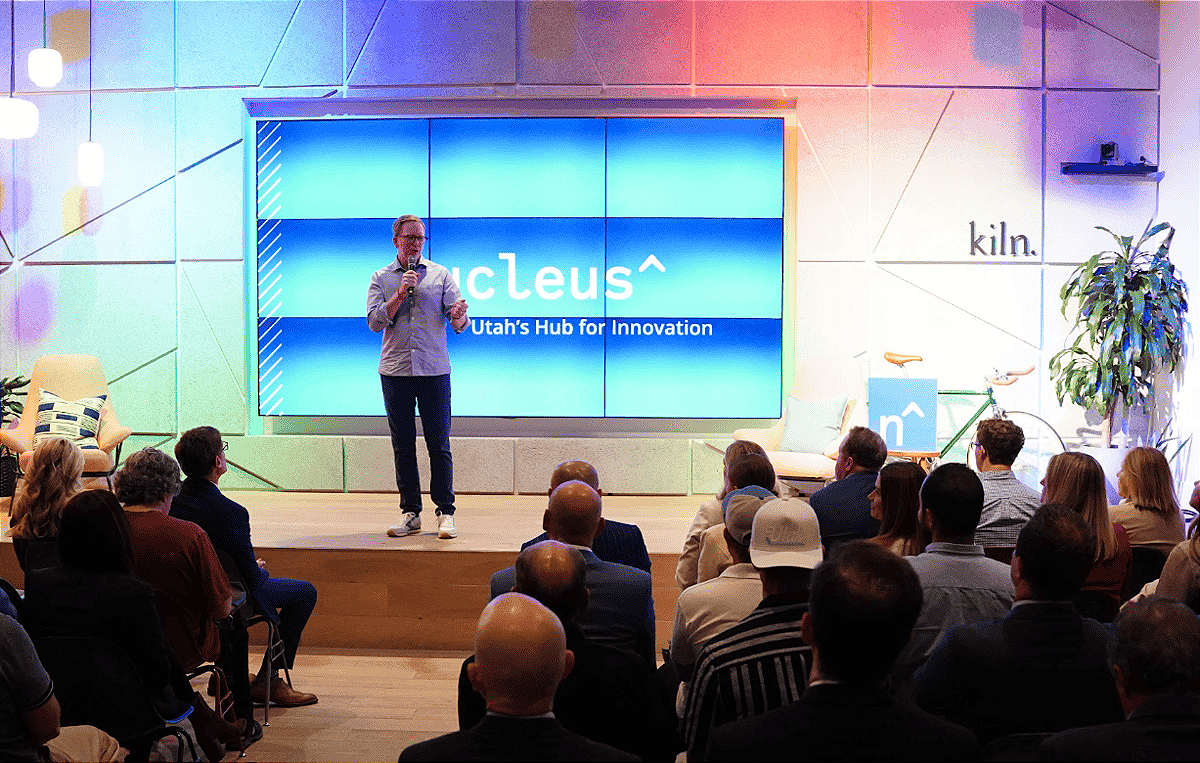
Arian Lewis, CEO of Kiln, and host of the event, spoke to the human side of Utah’s innovation ecosystem. Kiln, an innovative and stylish co-working space which is now active in twenty locations across nine states, began at the Gateway in Salt Lake City. “Utah is the best place in the country to start a company,” declarerd Lewis. “It’s because we’re all pulling together—from government to universities—and Nucleus sits at the center of that collaboration.” Lewis added that Utah isn’t just producing great companies; it’s exporting a model that other states—and even the world—can follow.
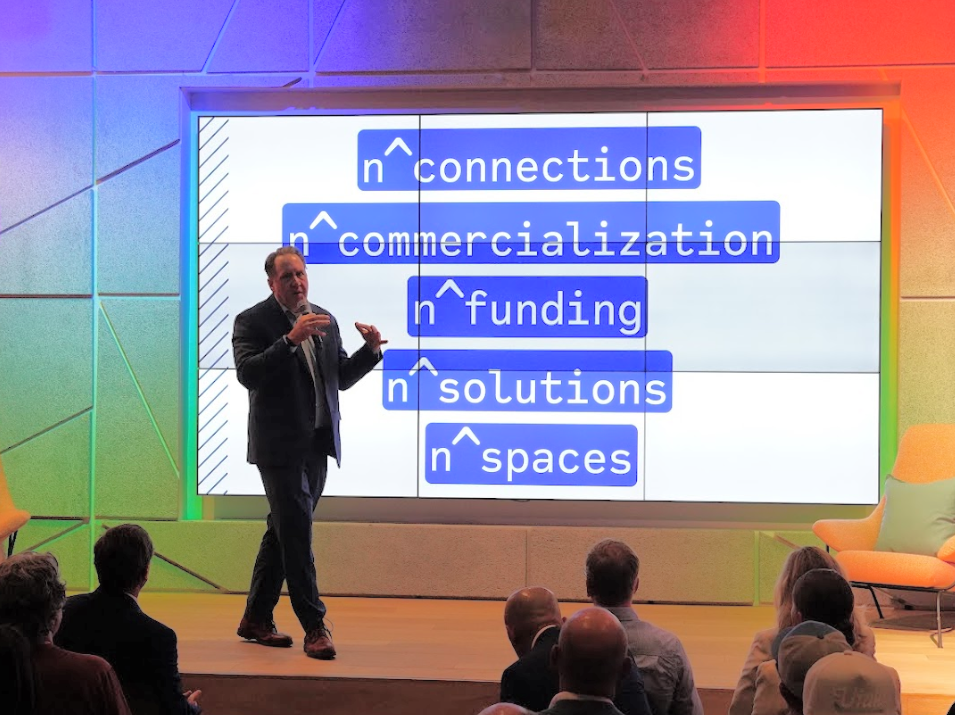
At the heart of Nucleus is a mission to connect people, ideas, and resources, explained Jefferson Moss, the architect behind the initiative. “Nucleus is about bringing government, education, and industry together to solve the biggest problems facing the world today,” Moss said. He outlined the institute’s five pillars: Connections, Commercialization, Funding, Solutions, and Spaces, each designed to accelerate innovation and translate research into economic impact.
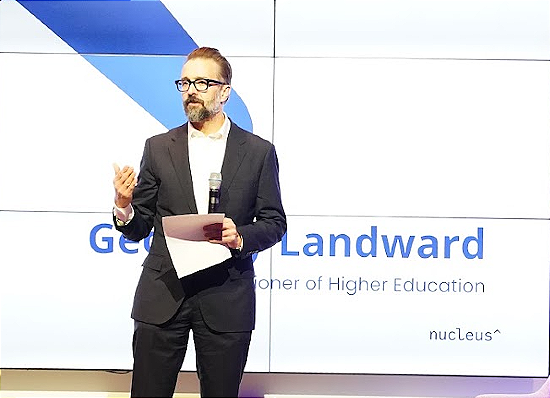
Geoffrey Landward, Utah’s Commissioner of Higher Education, underscored how the Nucleus Institute reflects a fundamental shift in the role of Utah’s colleges and universities.
“Higher education isn’t just about creating a workforce anymore,” said Langworthy. “It’s about fueling economic growth through the innovation, imagination, and discovery that happens on our campuses — and then turning those breakthroughs into industries right here in Utah.”
Langworthy noted that universities have long produced world-class research, but too often the ideas don’t become companies or remain in-state. Nucleus, he said, will help close that gap. “The future of higher education is true partnership with industry and government. We have to provide the fuel that makes sure this economy grows,” he said.
He argued that Utah’s approach has already set it apart. “When we look at Nucleus and the other things we’re doing here, Utah is the envy of the country,” Langworthy said. “We’ve figured out how to bring these groups together — not just for periodic meetings, but to actually work together to drive the state’s economy.”
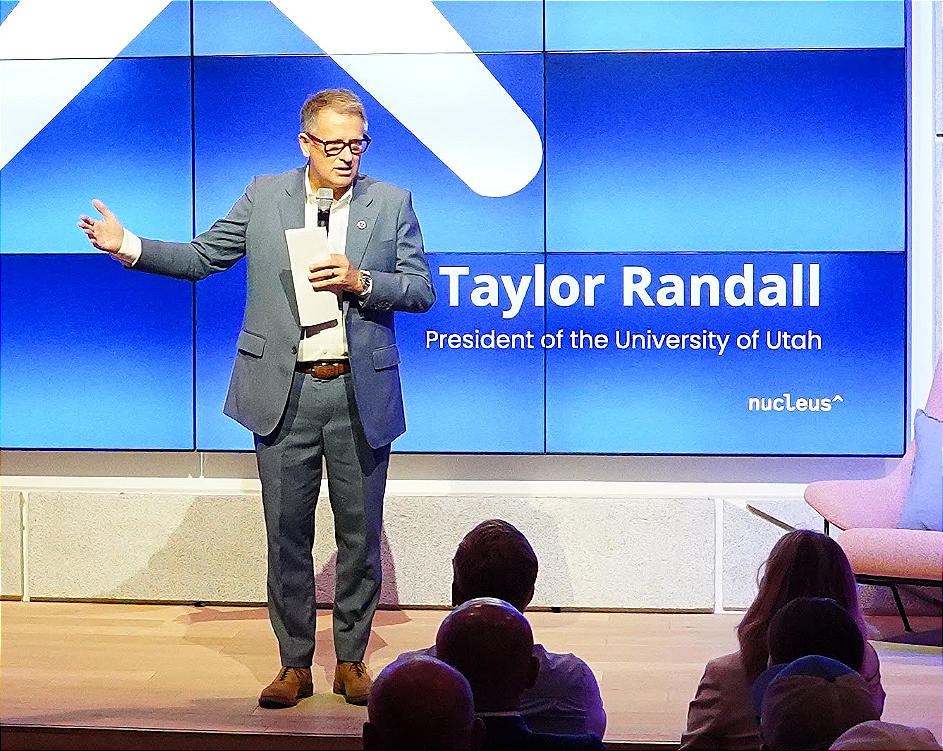
University of Utah President Taylor Randall underscored the stakes for Nucleus with a story about students venturing into a neglected market niche: technology for hitchhikers. At the Lassonde Entrepreneur Institute, he noted, hundreds of student-led ventures launch annually—but many falter when they reach the so-called “valley of death,” the perilous gap between prototypes and market-ready businesses.
“That’s where Nucleus steps in,” Randall said. “It shows us exactly how to carry promising ideas from prototype to reality.” The institute, he explained, can bridge funding shortfalls and guide entrepreneurs—like the ambitious duo tackling hitchhiker tech—through the formidable $100K hurdle needed to build a compact, portable charging station.
He connected the same challenge to the university’s research enterprise, which generates nearly $800 million a year in discoveries. Citing breakthroughs such as the artificial heart and the BRCA1/2 gene discovery, Randall noted that research is “no good if it stays in the lab.”
“As I look at our portfolio of products, I see hundreds of things that need a better chance,” he said. “How do we double, triple, quadruple the speed of getting these inventions into our marketplace so our lives get better? That’s what Nucleus will help us do.”
Randall said he was “thrilled to be a partner,” emphasizing that the combination of resources, funding, and passionate talent will “make the magic in this ecosystem and accelerate us to new and better things.”
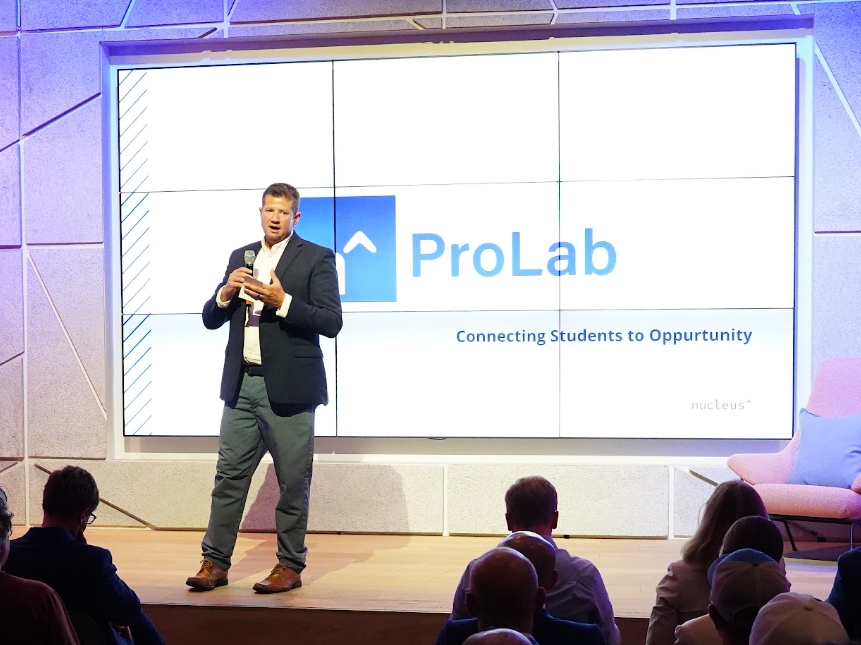
Vic Hockett, speaking on behalf of Talent Ready Utah, spotlighted two of the practical engines inside Nucleus: ProLab and the Utah Talent Hub.
ProLab, he explained, is designed to embed students directly into industry problem-solving. He cited a case where Southern Utah University students from chemistry, engineering, business, and entrepreneurship partnered with manufacturer GAF to tackle a costly waste byproduct challenge. “This is the type of impact ProLab can and will have across Utah,” stated Hockett.
The Utah Talent Hub, meanwhile, is a statewide platform meant to streamline the way employers and students find each other. Described by Hockett as “kind of like a dating app,” the system allows employers to create profiles of the skills and attributes they’re seeking, while students build profiles based on their studies, career interests, and values. A matching algorithm then connects the two, with real-time dashboards for both sides.
“What makes this special,” he said, “is that an employer in Salt Lake who opens up a major project could draw a student from UVU, one from Utah Tech, one from USU — bringing them all together to solve problems for industry.”
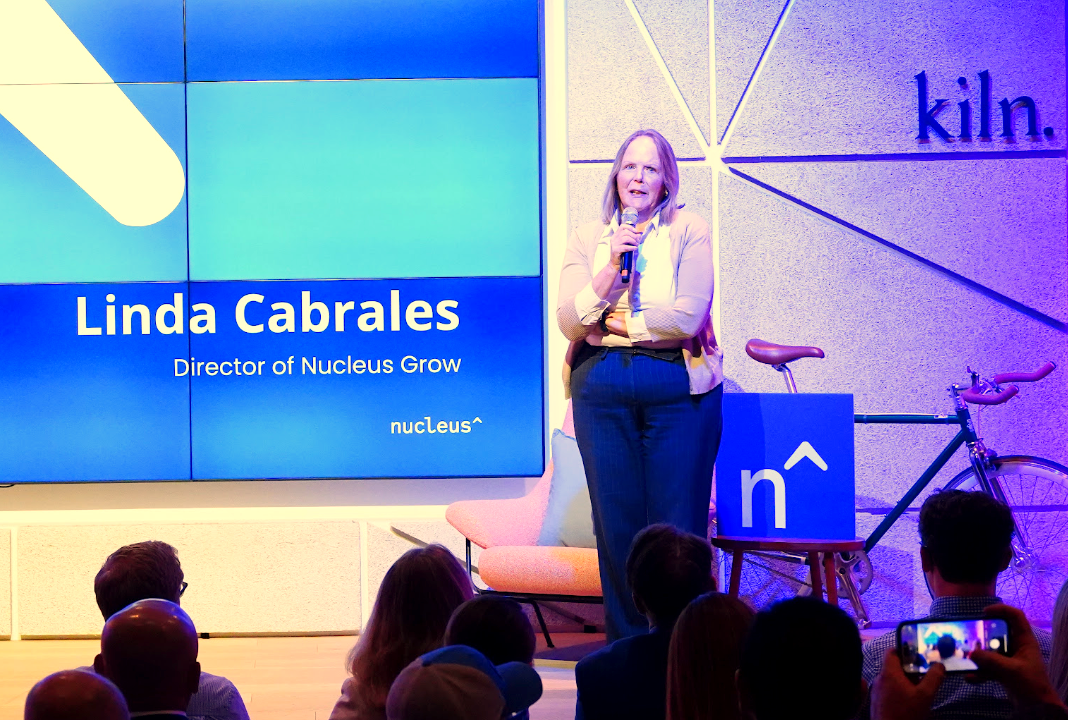
Linda Cabrales, director of Nucleus Grow (formerly the Utah Innovation Center), focused on commercialization.
“Commercialization is a pillar of Nucleus,” Cabrales said. “No matter what the great idea is, if you can’t bring it to market, it’s all for not. We’re bringing together entrepreneurs, university researchers, and partners to make that happen.”
Her office supports early-stage technology development and helps small businesses access federal funding like America’s Seed Fund (SBIR/STTR) which distributes nearly $4 billion annually nationwide. “You can’t be faint of heart,” she said. “Entrepreneurs face lots of ‘no’s before they get a ‘yes.’ That’s the persistence we support.”
She emphasized that the center’s work is deeply collaborative, spanning universities, government, and industry, and said Utah’s innovation ecosystem is recognized nationally as a model. “The secret sauce in Utah,” Cabrales said, “is that we all come together — amazing leadership in government, university partners, and industry — to create something like this.”
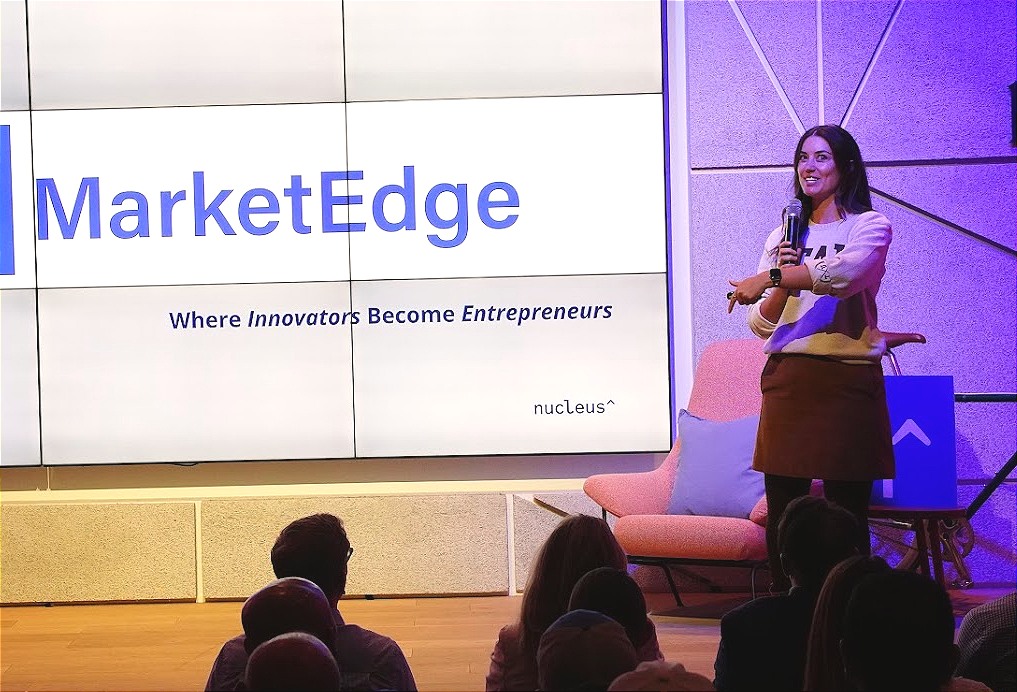
Angela Smith, Deputy Director of Nucleus, highlighted Nucleus’s efforts to ensure commercialization resources reach all Utah universities.
“For the past two years, we’ve been working with representatives from each of the state’s major higher ed institutions to provide support for commercialization,” Smith said. “Not every campus has a tech transfer office or the resources to bring research to market. That’s where Nucleus steps in.”
She announced the launch of Market Edge, an eight-week cohort program beginning in September designed for professors, PhDs, postdocs, and researchers exploring commercialization. Participants will receive training, resources, and industry connections to move innovations into the marketplace.
Smith also described the Nucleus funding infrastructure, including non-dilutive grants and the state-backed Nucleus Fund (formerly the Utah Innovation Fund, now a $40 million fund, previously covered by TechBuzz). “We’ve invested in 16 portfolio companies in AI, energy, life sciences, and desert tech,” she said. “We also involve student analysts from across Utah to provide technical diligence and support for these investments.”
Smith called out the following portfolio companies funded by the Utah Innovation Fund: Rebel Medicine, Paterna Biosciences, Purgo Scientific, AuthentiFace, Inherent Biosciences, Evolution Bio, 3Helix, Microvascular Therapeutics, Stratus, Buster, PrismAI Therapeutics, Biologic Input Output Systems, and Eden Tech.
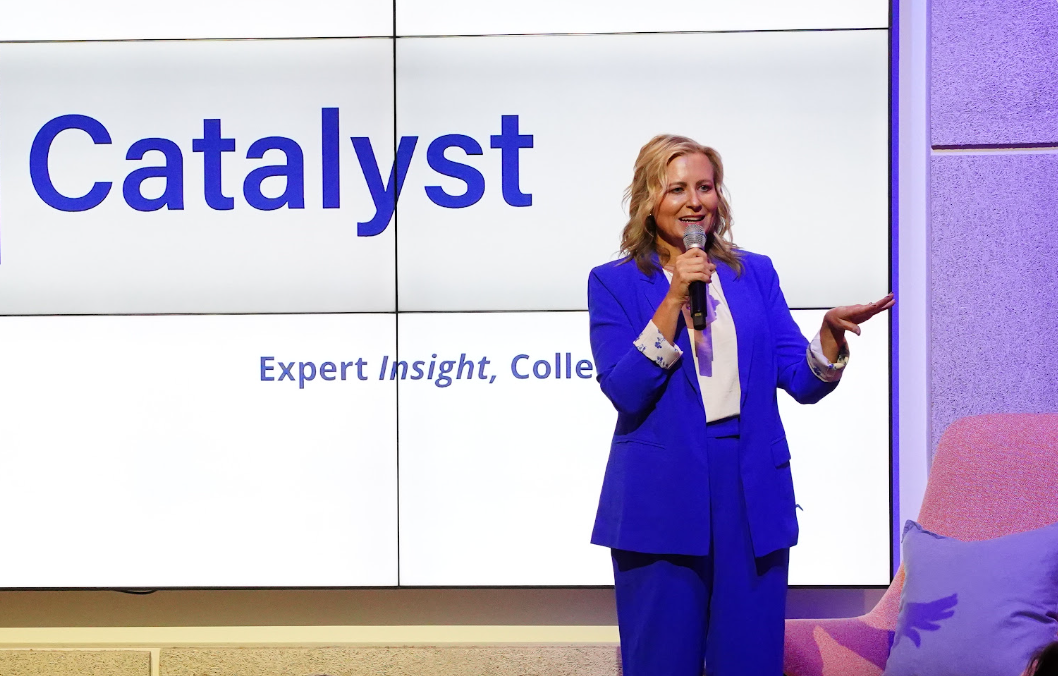
Cydni Tetro, leading the “Solutions” pillar at Nucleus, outlined how the institute addresses gaps in Utah’s innovation ecosystem by bringing ideas into rapid action.
“The Catalyst program is our way to activate industry, researchers, education, and government together,” said Tetro. “We’re not just creating white papers or identifying problems — we’re taking ideas and putting them into execution.”
The program convenes dynamic groups to respond to fast-moving challenges, such as emerging AI workforce demands, by integrating insights from higher education, policy, and industry. Tetro emphasized collaboration and agility: “We want actionable solutions to happen as fast as possible. In a world of changing AI, this is the best strategy to make sure our workforce is ready and our economy is resilient.”
Tetro invited stakeholders to join the initiative, contribute their expertise, and help prioritize solutions, underscoring the importance of cross-sector collaboration in tackling Utah’s most pressing challenges.
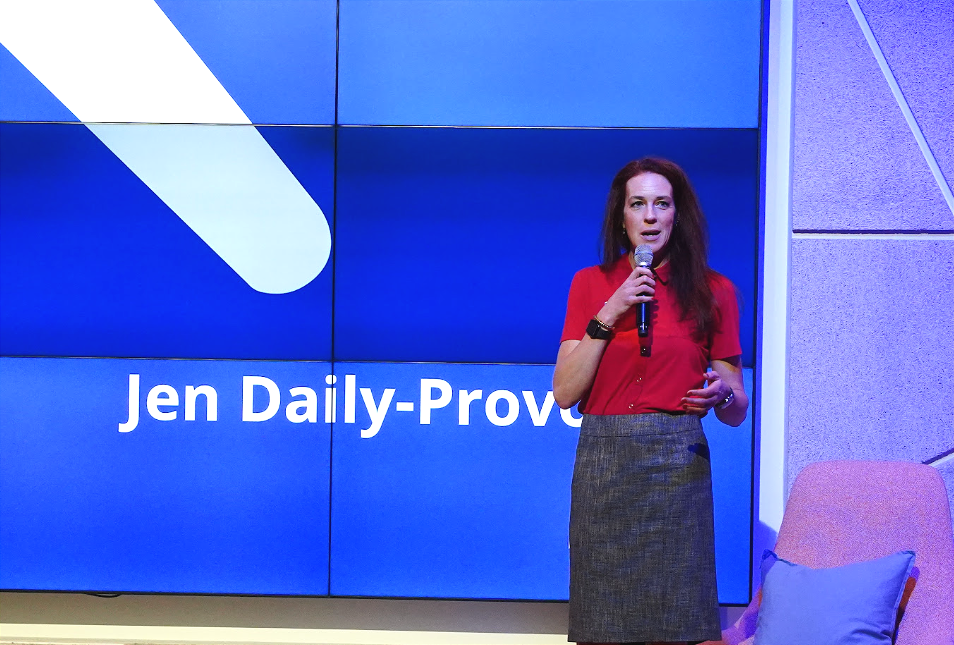
Jen Dailey-Provost, state legislator and University of Utah instructor, emphasized the Policy Lab, which immerses students in real-world policy challenges. “We’re raising a generation that can problem-solve in meaningful ways, marrying their passion for innovation with an understanding of policy,” she said.
Finally, Moss detailed the importance of innovation spaces. Convergence Hall, built on repurposed former state prison land, will become a global innovation hub. Additional innovation districts are underway at UVU, Utah Tech, Weber State, and the University of Utah, along with Startup Cedar in southern Utah. These spaces foster serendipitous connections among entrepreneurs, students, and industry experts, accelerating collaboration and new ventures.
Governor Cox concluded the event by celebrating Utah’s collaborative ecosystem and ambitious vision. “We punch above our weight,” he said. “Through Nucleus, we are leading the nation in AI, energy, and deep tech innovation, creating an environment where ideas turn into industries, and where Utah continues to set the standard for the rest of the country.”
To learn more, visit nucleusutah.org.

